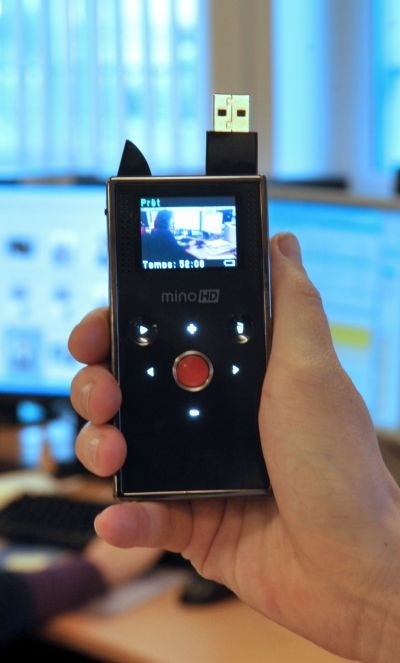Your support helps us to tell the story
From reproductive rights to climate change to Big Tech, The Independent is on the ground when the story is developing. Whether it's investigating the financials of Elon Musk's pro-Trump PAC or producing our latest documentary, 'The A Word', which shines a light on the American women fighting for reproductive rights, we know how important it is to parse out the facts from the messaging.
At such a critical moment in US history, we need reporters on the ground. Your donation allows us to keep sending journalists to speak to both sides of the story.
The Independent is trusted by Americans across the entire political spectrum. And unlike many other quality news outlets, we choose not to lock Americans out of our reporting and analysis with paywalls. We believe quality journalism should be available to everyone, paid for by those who can afford it.
Your support makes all the difference.Cisco has pulled the plug on its popular handheld Flip digital video cameras, the top-selling camcorder brand in the US, stating consumer cameras are no longer part of the company’s overall strategy.
The decision to kill its Flip camcorders was made as Cisco moves away from consumer electronics products and towards enterprise solutions.
"We are making key, targeted moves as we align operations in support of our network-centric platform strategy," said John Chambers, Cisco chairman and CEO in an April 12 statement.
"As we move forward, our consumer efforts will focus on how we help our enterprise and service provider customers optimize and expand their offerings for consumers, and help ensure the network's ability to deliver on those offerings."
The news has come as a surprise to many in the industry. Market research firm NPD Group told All Things Digital that Cisco's Flip division was "far and away the leading consumer video camera company," despite seeing its market share drop in recent years.
According to NPD Group, Flip held 21.6 percent of the digital camcorder market ahead of Sony (20.9 percent) and Kodak (12.8) in February 2011.
Looking back just a few years ago, the sub-$200 portable video cameras were an affordable, compact alternative to the bulkier, more expensive camcorder solutions on the market.
But the launch of all-in-one, video-capable smartphones had a hand in eroding the company’s market dominance.
The arrival of devices like Apple’s video recording iPods have also played their part.
When Steve Jobs unveiled Apple’s video recording capable iPod Nano in 2009, he marketed it as a Flip alternative with more features and a $149 price point.
"Why buy a cheap camcorder if you could buy an iPod Nano that shot video, too?" asked Wired magazine's Brian X. Chen, adding that "When iPhones and Android phones began shipping with decent cameras for shooting stills, the Flip seemed excessive. When phones got HD video recording, the Flip was downright redundant."

Join our commenting forum
Join thought-provoking conversations, follow other Independent readers and see their replies
Comments